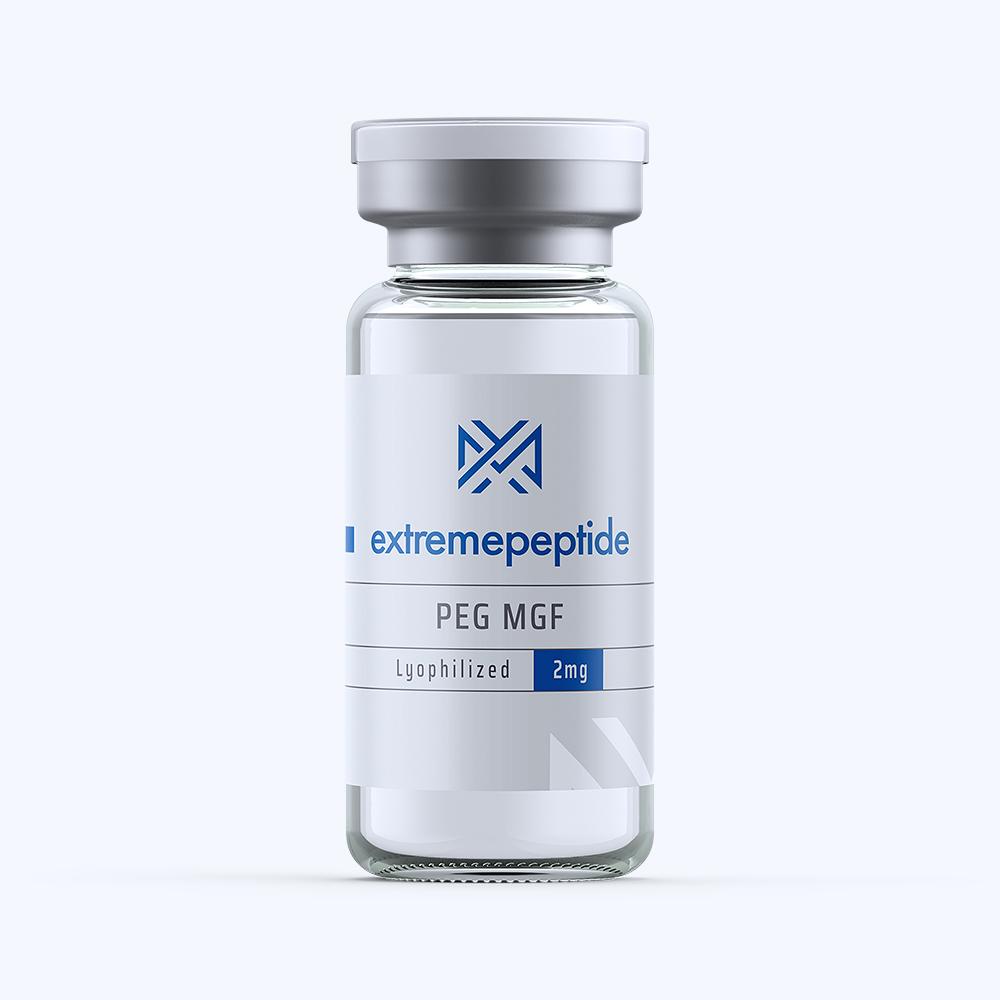Peg MGF is a systematic, water-soluble peptide whose name is short for PEGylated Mechano Growth Factor. Its molecular weight is 2867.2, and its molecular formula is C121H200N42O39.
PEG MGF Overview
According to scientific study that has been conducted on animal test subjects, PEG MGF is a peptide that is made up of two components. The first component, PEG, is Polyethylene glycol. The second component, MGF, is Mechano growth factor. In order to best understand the overall functionality and operational mechanics of PEG MGF, it is important to look at each component separately.
A Look at PEG
In essence, PEG is a polyether compound that is noted for its capacity to induce a particular process that is known as PEGylation. This process is essentially defined by a covalent bond that can form between a peptide and a secretion. This bond more or less forms a protective barrier around the secretion; with the formation of the barrier, the instance of enzymatic exposure that may otherwise decimate the secretion it protects is dramatically decreased. Ultimately, this allows for the protected item to experience a much more stabilized existence and ultimately, a much longer life.
A Look at MGF
MGF is also known as Mechano growth factor. What that means is, it has the ability to promote growth and repair in the muscles and tissues of animal test subjects. This particular ability to induce these actions are vital to several key processes to occur within an animal test subject’s body, from protein synthesis to the retention of nitrogen. In addition, it has also shown a faculty to boost myoblast proliferation, meaning that it can boost the production of actions that relate to growth and repair. The downside to this secretion is that it has a rapid half-life; one that only lasts for a few minutes.
When the Two are Combined

Scientific study that has been based on animal test subjects has determined that PEG MGF’s primary means of operation can be fully traced to the way in which these two separate components work with each other. Essentially PEG is able to form a covalent bond around MGF; this barrier allows the secretion to enjoy a substantially longer half-life, as it can pass throughout the bloodstream without experiencing the level of breakdown as it may otherwise would. As a result, the process enables a greater measure of stability to occur; ultimately, this stability leads to a boost in the secretion’s overall functionality. Overall, scientific study that has been based on animal test subjects has determined that the elevated process leads to an elevated level of muscle and tissue growth and repair; this ultimately leads to a substantially more efficient means of an animal test subject being able to achieve homeostasis.
Positive Results
Scientific study that has been based on animal test subjects has been able to develop a few perceived benefits regarding the presence and functionality of PEG MGF. Some of these elevated processes include:
- An increase in skeletal muscle regeneration – Because of the way in which PEG MGF can extend the half-life of the secretions as they relate to mechano growth factor, scientific study that has been based on animal test subjects has determined that the nature of such secretions could translate into a more improved process in relation to the efficiency of muscle and tissue repair.
- An elevated means of injury recovery – Scientific study based on animal test subjects has determined that PEG MGF’s ability to extend the half-life of mechano growth factor can allow for a longer window of time in which the secretions processes as the tie into muscle fiber and skeletal tissue repair can be produced. By this rationale, it is thought that the peptide could allow for an animal test subject to experience a much more rapid rate of recovery from an ailment.
- A boost in bone density – Scientific study on animal test subjects has also determined that PEG MGF has the capacity to boost the amount of bone mineral that can be produced. Therefore, it is thought that the presence of the peptide could allow for an animal test subject to experience a more efficient means of bone growth.
